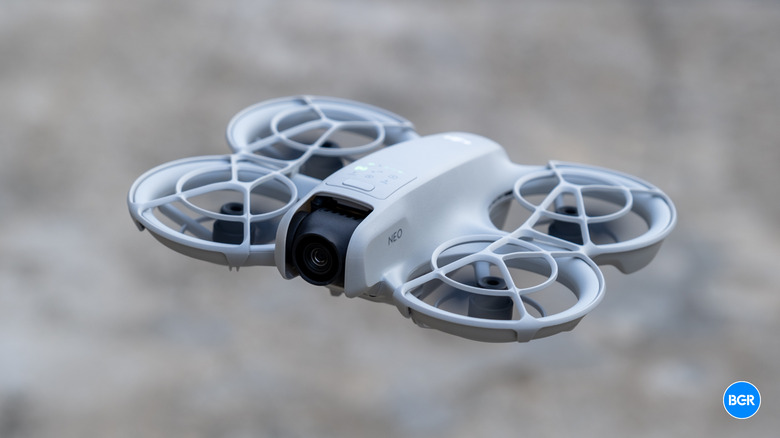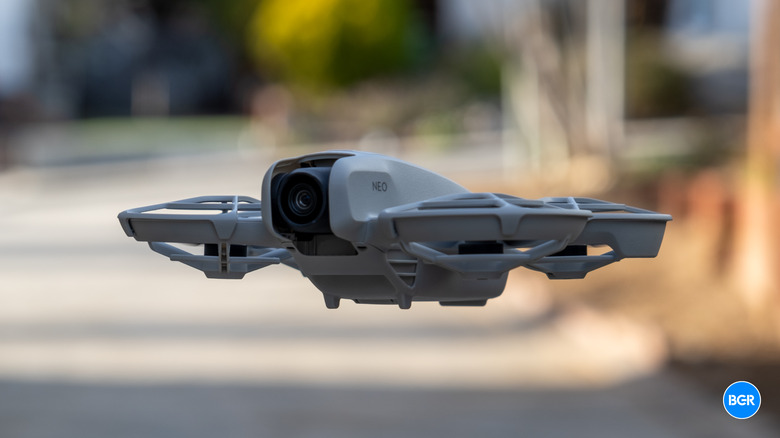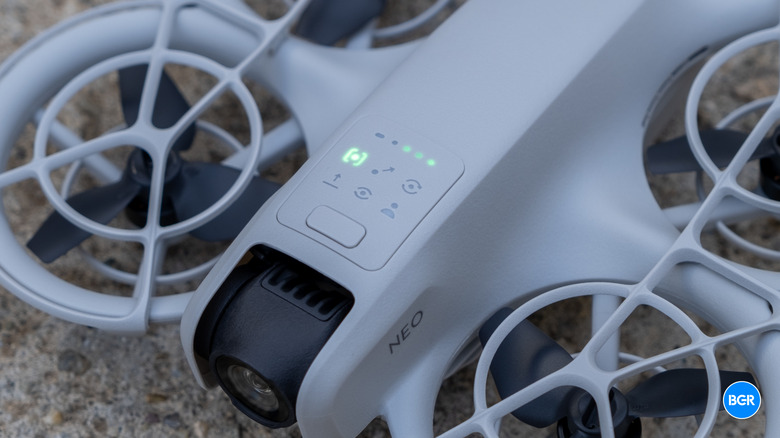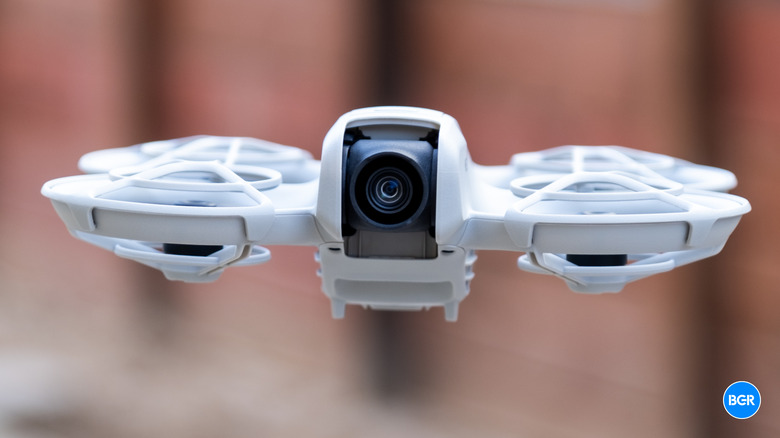DJI Neo Review
- Fun to fly
- Good camera for the price
- Very inexpensive
- Well-built
- Battery isn't great
- A little slow
| Buy From | List Price | Sale Price | |
|---|---|---|---|
| Amazon | $199 | $199 | See It |
We may receive a commission on purchases made from links.
DJI is expanding into new territory. Recently, the company unveiled its cheapest and lightest drone ever, called the DJI Neo. The drone is built for those who want to capture quick social media content or get started with drone flying without paying for a higher-end model like the DJI Mini 4 Pro.
The DJI Neo comes in at only $199, and while it's clearly not built for professional use, it has a lot going for it. I've reviewed most of DJI's recent drone models and enjoyed doing so, thanks to their high-quality video and solid performance. Clearly, however, DJI had to make some compromises to hit this low price point. Does the DJI Neo do enough to justify its price tag?
Fits in the palm of your hand
If you've seen other DJI drones in the past, you'll recognize the DJI Neo as one that fits within the lineup. It's made from the same light grey plastic, with black propellers and a black camera gimbal.
Of course, there are some major differences in design between the Neo and other DJI drones, though. Chief among those is its size. The Neo is absolutely tiny and actually was able to fit in the palm of my hand, with the ends of my fingers still poking out from underneath the drone. The little drone measures only 6.18 x 5.11 x 1.9 inches and weighs 135g, or 4.76oz.
A few buttons are located on the drone's top. There's a power button and a mode switch button that can be used to have the drone take off if you don't want to use the app or controller's takeoff function.
Speaking of, the Neo is built to be highly portable, and the base package doesn't come with a controller. Instead, you'll control the drone with your phone using the DJI Fly app. However, if you want to, you can buy the DJI Fly More bundle, which comes with the RC-N3 controller. That's the package we tested with, and I found the controller to be easy to use and tactile. Keep in mind that even with that controller, you'll still have to use your phone as the display to see a feed of the drone's video and access some controls.
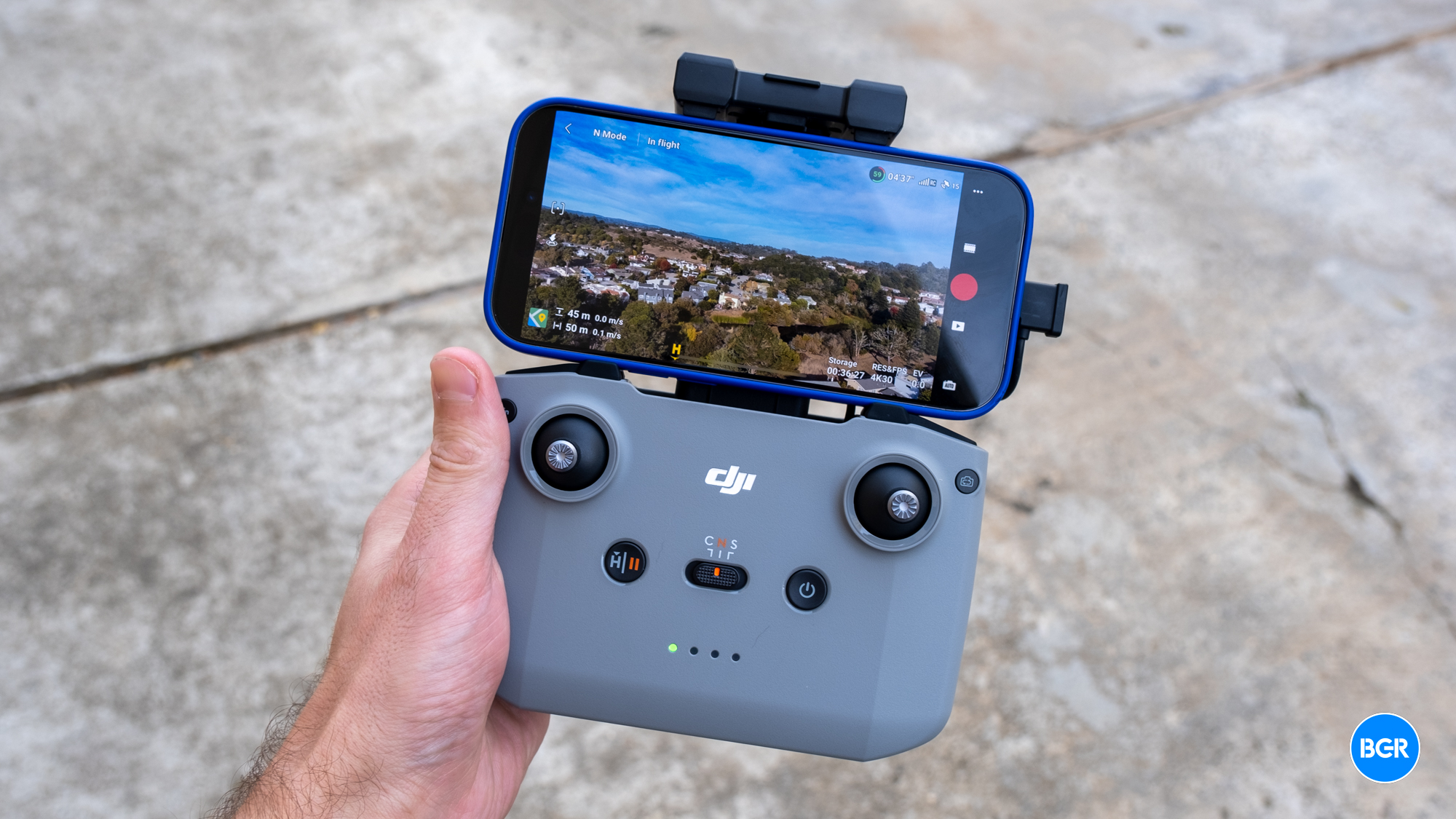
The controller has other advantages, though. With your smartphone alone, you'll only be able to see a live video feed within around 50 meters of the drone, as the two will connect through Wi-Fi. With the controller, the drone can connect at distances of up to 6.2 miles. In other words, if you want to be able to fly the drone longer distances, you'll want the controller. It felt like the drone responded a little quicker to input from the controller, too, even at a shorter range.
Quick flight mode controls and a low battery life
Despite being so small, the DJI Neo offers a range of helpful features for content capture and general flying. For starters, unlike most other DJI drones, the Neo has built-in storage — 22GB of it. That allows it to store around 40 minutes of 4K footage. That's not huge, and it's unfortunate that there's no MicroSD card slot for those who want to be able to store more footage. That said, the companion app makes it easy to transfer footage from the drone to your phone, which helps.
Perhaps the headline feature of the drone is the ability to take off and land in your palm, something triggered simply by you placing your palm under the drone. It worked quite well, though you will need to place your hand fairly close to the drone to trigger landing.
Also, unlike other DJI drones, the Neo allows users to quickly and easily switch so-called "QuickShot" modes straight from the drone itself. These modes include things like "rocket," "circle," and "spotlight," and are designed to allow you to quickly and easily capture footage for things like social media. The features leverage subject tracking, and they seemed to work quite well — though despite the button changing the control modes, you'll still need to connect the drone to your phone to use them.
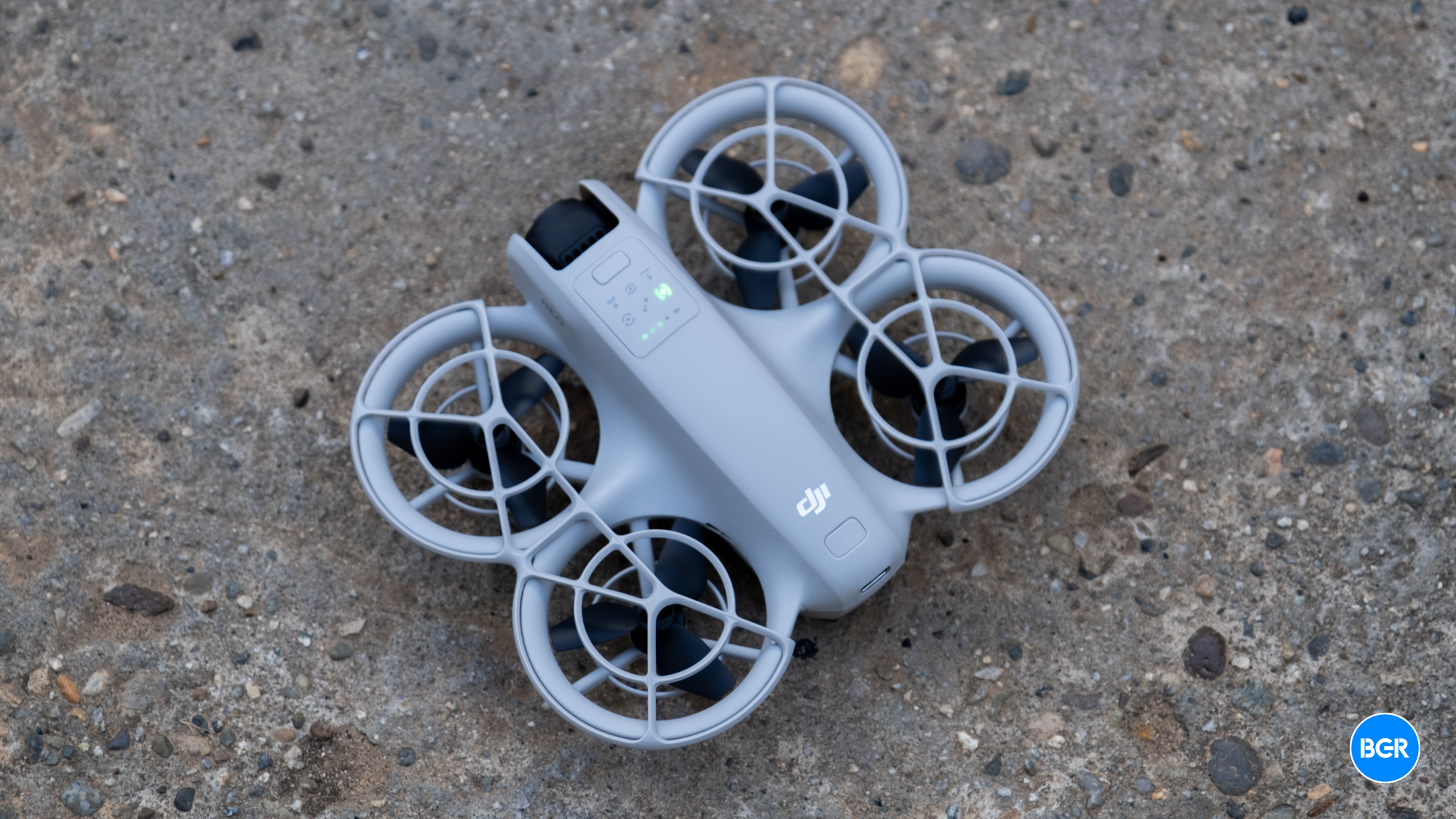
There is one big feature missing from the Neo — obstacle avoidance. In other words, you'll want to be careful around things like trees and power lines, as the drone won't automatically avoid them.
The DJI Neo's battery life sits in at around 18 minutes, which is pretty short. The Fly More combo that I tested with comes with a battery charger and two extra batteries, which can come in handy. If you're only using the drone for quick social media shots, that may not matter as much, but if you plan on using the drone for recreational flying or longer video capture, it' may impact's worth having an extra battery or two on hand.
Because the Neo is so small and built for portable use, don't expect it to be all that quick. Indeed, the drone wasn't very fast — but I didn't expect it to be. Despite the slower speed compared to DJI's more expensive drones, it was easy to maneuver and controls were easy to get used to. That was true when using both the controller and a phone, however it was much easier to use the controller for longer sessions.
DJI Neo camera quality
The Neo isn't built for super high-quality video — for that you'll need to shell out for one of DJI's more expensive drones. That said, I was pleasantly surprised with the video quality that was on offer for a drone that costs $199.
The DJI Neo has a 1/2-inch sensor with a 12-megapixel resolution, capable of capturing 4K video at 30 frames per second or 1,080p video at 60 frames per second. Those looking for slightly more serious video features will likely want to upgrade to a drone that does indeed support 4K video at 60fps.
To be clear, video quality isn't incredible. Colors still looked a little muted, and the drone struggled in challenging scenarios, like when shooting towards the sun, where footage looked more washed out.
But it's important to remember what this drone is built for — social media and casual video capture. For that, it does pretty well, and to be clear, I mostly noticed the issues with video after transferring video files to my computer and viewing on a larger screen.
Conclusions
The DJI Neo is a great drone in its price range. It's not the fastest drone out there, nor does it capture the best video or have the best battery life. Frankly, it doesn't just compromise on some of those things to hit a low price point — it compromises on all of them. But it's still good enough at all of those things, while sitting in at only $200. Oh, and it's a lot of fun.
The competition
There really isn't much competition in this price range. Sure, you can find all kinds of cheap drones on Amazon, but their reliability and quality are largely untested. If you're looking for a fun drone under $200, the DJI Neo is the way to go.
Should I buy the DJI Neo?
Yes. It's a fun little drone at a great price.
